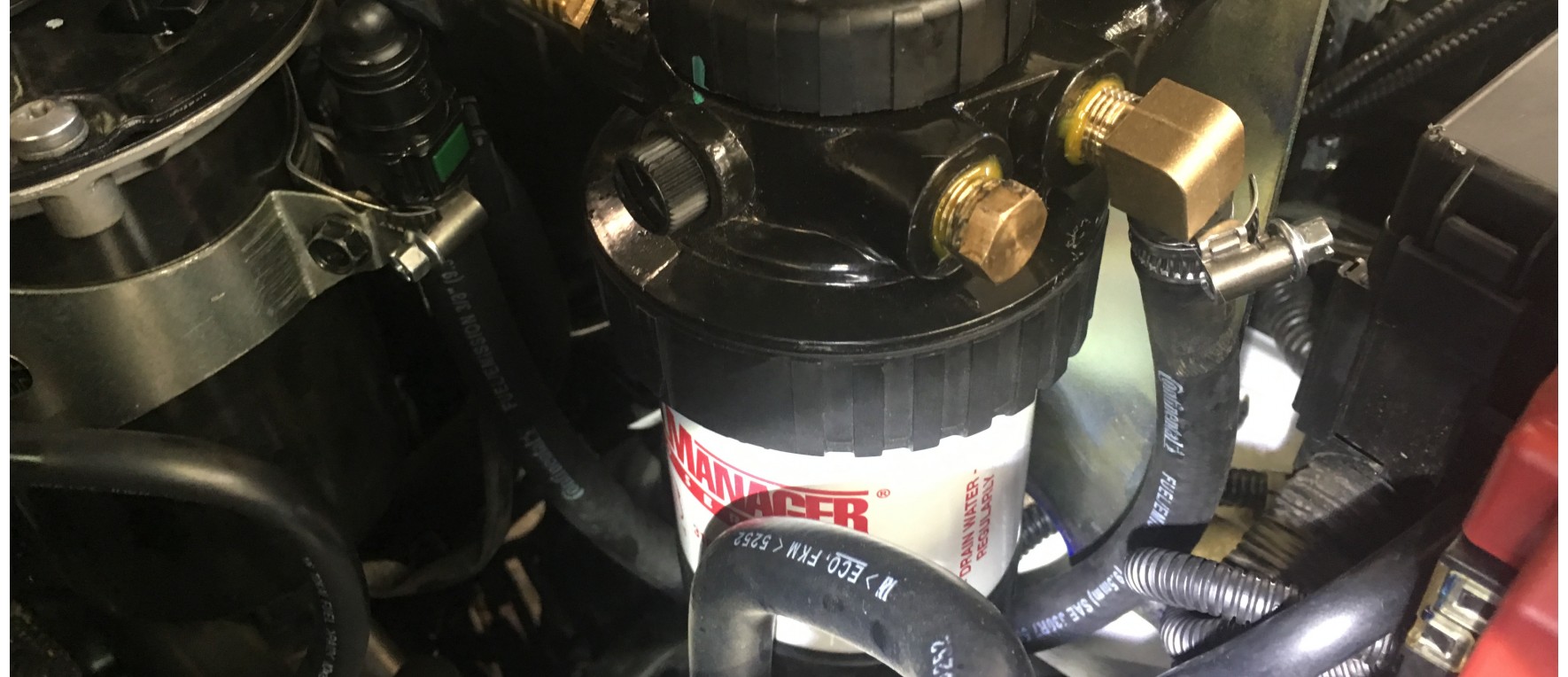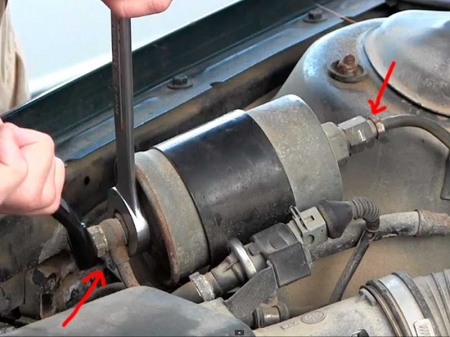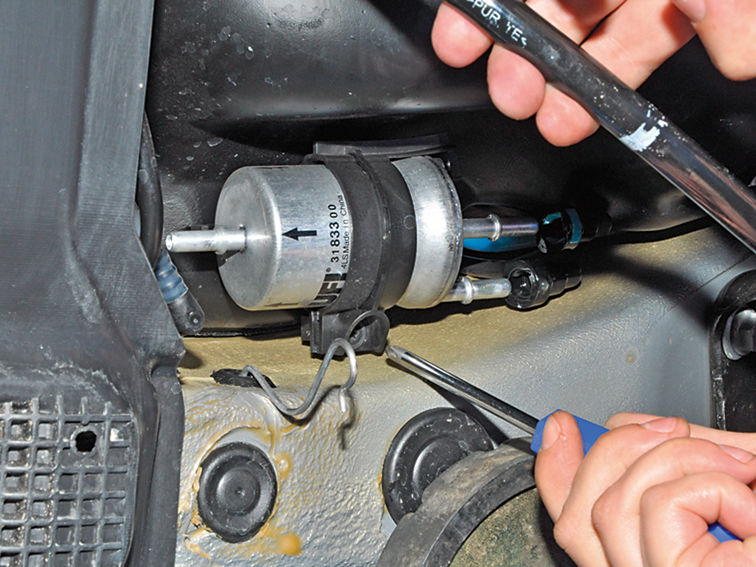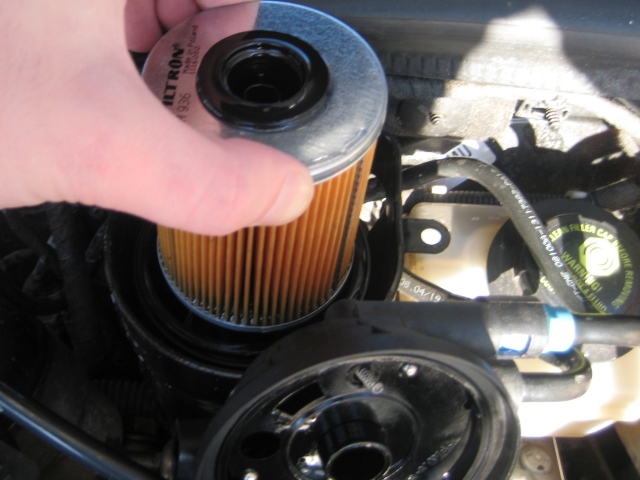
When should you change the filter? How will it serve the car? The operating instructions or recommendations of the service workers will help to answer these questions. In any case, everything depends entirely on the transport and conditions of its operation.
It is recommended to subtracted at least 10 thousand km from the time indicated on the package given the dustiness of domestic roads and far from the best quality of gasoline and diesel fuel. That being said, if the periodicity of replacing the clogged filter in the instruction is after every 40 thousand kilometers then it is necessary to change it every 30 thousand km. Specialists at the maintenance stations are advised to change the fuel filter every 20-25 thousand kilometers.
 If you do not change the filter as recommended or it is very clogged, then the engine may not start. can Certain symptoms of breakdown that occur due to the large mileage of the car on the blocked filter serve as evidence of the fuel filter failure:
If you do not change the filter as recommended or it is very clogged, then the engine may not start. can Certain symptoms of breakdown that occur due to the large mileage of the car on the blocked filter serve as evidence of the fuel filter failure:
• uneven operation of the engine;
• the car loses its power during the period of movement;
• the car losing its power when pressing gas;
• incorrect switching of speeds (in the case of automatic - incorrectly transmits shifts switching to the engine);
These days many drivers are trying to save on car-care centers and make a replacement on their own. The replacement of a fuel filter will not be too difficult on some cars, however, others might be more complicated and require professional assistance.
What to prepare?
If the component is located below the bottom of the car, you will need to drive to the pit.
In order to replace the fuel filter you will need:
• a new cleaning element (buy filters that are produced by the manufacturer or ones that are advised by them);
• prepare the necessary tools (wrench, pliers, in some cases special tools, a lantern (in the case of poor lighting), cleaning products, rubber gloves, glasses);
• manual vacuum pump, dish to collect fuel from the filter, filter sealing ring, dishes for collecting water present in the filter;
• rags.
The process of changing the non-separable fuel filter for any car
There may be some differences in the process depending on the design features of the transport. If the car has an item installed in the gas pump assembly, we recommend that you read the manufacturer's recommendations. It is advised to change the filter together with the fuel pump.
Warning! Take care of safety when handling flammable substances! When replacing a fuel filter, smoking in the room is prohibited. Fuel vapors are poisonous, so there should be good ventilation in the workplace.
 1. Determine the location of the fuel filter. In a diesel and carburetor car, the item is in a tidy space, either under the bottom or in a tank with a gasoline pump (in gasoline cars).
1. Determine the location of the fuel filter. In a diesel and carburetor car, the item is in a tidy space, either under the bottom or in a tank with a gasoline pump (in gasoline cars).
2. Regardless of the location, remove the fuel pump fuse and wait until the car stops (to remove pressure on the system).
3. To prevent the ignition during the replacement process, remove the battery terminator terminal.
4. Examine the filter to determine the method of mounting to the gas pipeline (the mount can be inlet or outlet). Bolts or latches are used here depending on the car. Remember the sequence everything is installed in order not to confuse when installing a new fuel filter. If possible, take a picture of the location of the filter. Do not forget about the location of the sealants and pads.
5. Take a prepared cloth and wrap it with an element of fuel purification, since it spills out a bit of gasoline. Using a cross-screwdriver or wrench, disconnect the fuel filter from the mounting position. Now you can remove it.
6. Install the new component in the same position in which the old one was installed (the arrow on the filter showing the direction of gasoline will guide you).
7. Connect the gas pipeline, pre-checking the integrity of the pipe. If the nozzle is damaged, replace it.
8. Insert the fuel pump fuse and connect the battery terminal.
9. Try to start a car. It may not work the first time because the system pressure has been dropped. Turn on the ignition for 30-60 seconds, then try to start again.
For diesel engines
In variable fuel filters, before installing the cartridge, it is imperative to get rid of water that may be present in the fuel filter housing. Remove water with the bottom drain plug. On the upper side of the fuel filter housing, a manual pump is usually installed. It serves to remove air from the fuel system. There are designs where the electric heating of a fuel filter system is used, which makes it easier to start the engine and prevents filter from clogging with paraffin, which is formed during the crystallization of diesel fuel in winter conditions.
After that you need to insert the suction tube into the filter housing. First, make sure there is no dirt in the filter and only then insert the cartridge. Next, close the cover with a new sealing ring. Turn on the ignition only for a few seconds to prevent the engine from starting. The fuel pump will start to work, it will fill the filter with fuel and thus remove the accumulated air from the fuel system. Keep track of the fuel system's airtightness.
Filter locations in diesel engines:
1. Mesh filter in the fuel tank;
2. Filter-tank on the suction line;
3. Coarse filter, as well as a thin-walled filter, located on the low pressure line.
Do not blow air on the fuel filter as you can easily break the filter element. If leaking diesel fuel appears on rubber parts, then they should be wiped immediately. Otherwise, it can lead to the failure of hoses. Never pour out waste oil into household waste.
When replacing the old fuel filter with a new one, do not forget to fill it with fuel before starting the engine.
Based on internet resources
Leave a Reply Cancel Reply
All fields are required